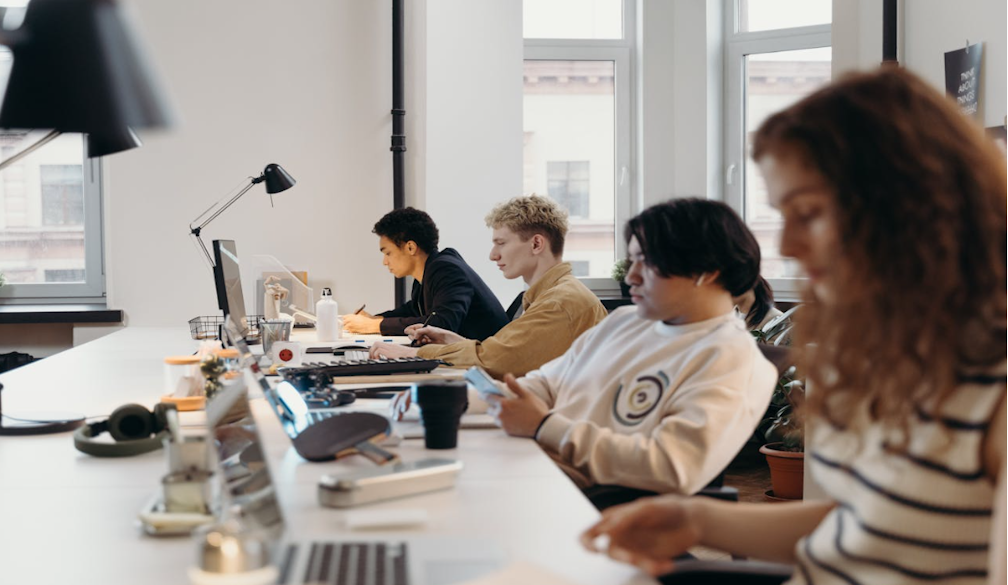How workplace psychosocial hazards have shifted in Australia

Workplace safety used to mean hard hats, high-vis gear, and hazard signs. But today, the biggest safety risks are usually the invisible ones. Rising levels of stress, burnout, bullying, and trauma are driving a wave of psychological injury claims, reshaping how the nation thinks about health and safety at work.
The numbers tell the story. Serious workers’ compensation claims for mental health conditions have risen by 36.9% since 2017, according to Safe Work Australia’s 2024 Psychological Health report. The same report found that psychological injury claims now take more than four times longer than physical injuries and cost employers nearly three times as much in compensation.
Trends and turning points in workplace psychosocial hazards
1. The pandemic’s lasting impact
COVID-19 reshaped the way we work. Offices emptied, routines collapsed, and the line between work and home life disappeared. While some people welcomed the flexibility of remote work, many experienced isolation, longer hours, and the constant pressure to stay connected.
The pandemic also exposed how fragile many support systems were and how quickly poor communication or leadership could hurt workplace wellbeing.
At the same time, widespread job insecurity intensified anxiety. Restructures, short-term contracts, and cost-cutting made many workers feel expendable. In frontline sectors such as healthcare, education, and social services, workloads soared and exposure to distressing events became routine, leaving long-lasting emotional fatigue.
2. Rising claims and severity
Psychological injury claims have surged over the past five years. Mental health conditions now make up nearly one in ten serious workers’ compensation cases. These cases often take much longer to resolve and are significantly more expensive than physical injuries, underscoring the complex nature of recovery.
Bullying, harassment, and excessive workload remain major causes. Incidents involving violence or aggression have also become more frequent, particularly in healthcare, public administration, and customer-facing roles. The result is a rising burden on both individuals and organisations, as long-term psychological harm becomes harder to ignore.
3. From personal challenge to workplace culture
Psychological risk is no longer viewed purely as a personal issue. The focus has shifted to how workplaces are designed and managed. Factors such as unclear roles, poor leadership, low job control, and unsustainable workloads are now recognised as central drivers of harm.
Employers increasingly see that workplace wellbeing depends on prevention, not just reaction. Clear communication, fair expectations, and supportive management systems protect staff far more effectively than one-off wellbeing campaigns or resilience training.
4. Recent regulatory turning points
Australia’s regulatory approach has also evolved. Safe Work Australia’s 2022 Code of Practice formally recognised psychosocial hazards as safety risks, leading most states and territories to update their laws. In New South Wales, the Psychological Health and Safety Strategy 2024-2026 places mental wellbeing at the core of workplace safety policy.
These changes mark a turning point for workplace wellbeing. Employers are now expected to identify and control psychological risks with the same rigour applied to physical hazards. The real test lies in how consistently these expectations are translated into everyday management and culture.
Challenges in fully understanding workplace wellbeing
1. Under-reporting and hidden harm
Official claims data capture only the tip of the iceberg. Many workers experiencing distress never lodge a workers’ compensation claim, often for fear of stigma, negative career consequences, or uncertainty about eligibility. The data thus mainly reflect the most severe or well-documented cases.
2. Blurred causation and delayed symptoms
Psychological injury seldom arises from a single cause. Work pressures interact with personal factors, such as health, family, and finances, and symptoms may emerge long after exposure.
As a result, attributing harm to work can be legally and clinically complex. Recovery is seldom linear; relapse is common, particularly if workers return prematurely or into unchanged environments.
3. Variation across sectors and roles
The risks are not evenly distributed. Healthcare and community sectors tend to have high exposure to trauma, while retail, hospitality, and service industries often confront aggressive client behaviours in their day-to-day. Fields that rely heavily on casual or contract labour deal with job insecurity, unpredictable hours, and weak workplace voice.
National averages smooth over these differences and can obscure hotspots of risk.
4. Digital strain and culture shifts
Views on stress and mental health are changing. Younger employees tend to speak more openly about wellbeing, while older workers may still see it as private, leading to different expectations around support and disclosure.
At the same time, technology has become a major source of pressure. Constant notifications, digital monitoring, and algorithm-driven performance targets blur work boundaries and heighten stress. For many employees, the always-connected workplace is now as mentally demanding as it is technical.
Ways forward for employers and managers
Creating psychologically healthy workplaces starts with good work design. Clear wellbeing policies, manageable workloads, and fair treatment are essential foundations.
Employee Assistance Programs also remain as vital support, but they’re most effective when integrated into broader wellbeing strategies. Ben Southall, co-founder of the online therapy platform and Employee Assistance Program provider Talked, says that trust and relevance are foundational to workplace mental health support.
“The foundation of any good EAP is trust,” says Southall. “People need to know their sessions are confidential and handled by qualified Australian therapists who understand local workplaces and pressures. When support feels private, relevant, and immediate, it has a far greater impact.”
Sustaining workplace wellbeing requires more than reactive programs. It involves building a culture where psychological health is considered in everyday decisions, from how work is structured to how people are led. When employers invest in prevention, build trust, and normalise conversations about mental health, they reduce harm and create workplaces where people can perform at their best and feel supported to stay.

















